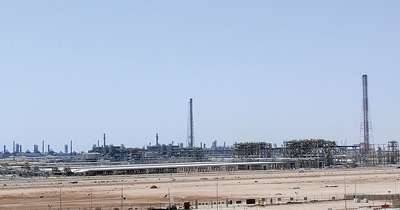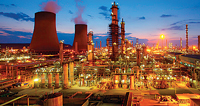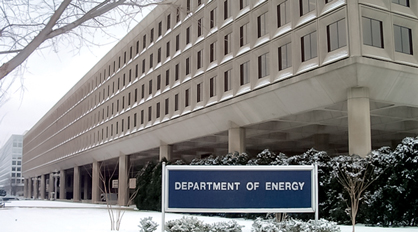Gas processing news
B. Thinnes, Technical Editor
US grants export authorization to Oregon LNG
The US Department of Energy (DOE) has conditionally authorized LNG Development Co. (Oregon LNG) to export domestically produced LNG to countries that do not have a free-trade agreement (FTA) with the US, from Oregon LNG’s terminal in Warrenton, Oregon.
Subject to environmental review and final regulatory approval, the facility is conditionally authorized to export at a rate of up to the equivalent of 1.25 Bcfd of natural gas, for a period of 20 years.
The DOE conducted an extensive review of the application to export LNG from the Oregon LNG terminal. Among other factors, the DOE considered the economic, energy security, and environmental impacts, as well as public comments for and against the application. It was determined that exports from the terminal at a rate of up to 1.25 Bcfd for 20 years was not inconsistent with the public interest.
Xodus Group secures engineering contract with Qatargas

International energy consultancy Xodus Group has been awarded a contract with Qatargas to provide vibration engineering services at onshore and offshore facilities. Working in partnership with Chiyoda Almana Engineering, Xodus will develop a long-term piping integrity management program to assess, reduce or eliminate vibration in all of Qatargas’ facilities, both onshore and offshore.
The $1 MM, one-year contract is for a technical services vibration program at the Qatargas QG1, QG2, QG3 and QG4 LNG facilities, as well as the Ras Laffan refinery (pictured) and associated offshore assets, with the option of an extension for an additional two years.
Multigas analyzer supports liquid fuel research

Two Fourier transform infrared (FTIR) spectroscopy analyzers are being used to simultaneously monitor multiple gas concentrations in laboratory-scale reactors at Sasol’s Research and Technology Center in Sasolburg, South Africa. The monitors, which were supplied by Gasmet Technologies of Finland, are being used to study changes in gas composition during the preparation of Fisher-Tropsch catalysts used in GTL processes.
Sasol uses the FTIR analyzers to determine the completion of a reaction in the preparation of a Fischer-Tropsch catalyst by tracking the tail composition in the reactor. This includes the analysis of CO, CO2, CH4, H2O and hydrocarbons up to C6. The H2O measurements are corroborated by readings from a dewpoint analyzer.
Both FTIR analyzers are used in conjunction with portable sampling systems that utilize a “hot-and-wet” measurement principle, so that a truly representative sample is analyzed with no requirement for drying or dilution. This portable technology was chosen because it can be quickly and simply deployed, producing accurate readings for up to 50 compounds simultaneously.
US to modernize natural gas infrastructure

The US DOE has developed a strategy to reduce methane emissions from natural gas systems. To address methane leakage, the DOE will modernize the US’ natural gas transmission and distribution systems. The effort includes:
- Efficiency standards for natural gas compressors. The DOE will begin the process of establishing energy-efficiency standards for new gas compressor units, which consume more than 7% of natural gas in the US. Improved efficiency will help provide energy savings for consumers and reduce greenhouse gas emissions.
- Advanced natural gas system manufacturing. In collaboration with industry, the DOE will evaluate and establish a high-impact manufacturing research and development initiative to improve gas system efficiency and leak reduction.
- Incentives for modernizing. The US Energy Secretary has recommended that the Federal Energy Regulatory Commission (FERC) look at ways to provide greater certainty for cost recovery for new investment in the modernization of gas transmission infrastructure.
- Encourage efficient distribution at state level. The DOE will join the National Association of State Regulatory Utility Commissioners in a technical partnership to accelerate investments for infrastructure modernization and repairs to gas distribution networks, with the DOE providing grant funding and technical assistance to help inform decision-making by state utility commissioners.
Bureau Veritas promotes LNG bunkering
The global testing and certification firm has published a comprehensive set of guidelines on LNG bunkering, with the aim of speeding adoption of LNG as a marine fuel by kick-starting the LNG bunker chain.
The company’s “Guidance on LNG Bunkering NI 618” provides recommendations on LNG bunkering, focusing on the framework to be established with port authorities and bunkering organizations before any commercial operation; the conditions to be observed before, during and after each bunkering operation; the management of emergency situations; and the training of staff involved in bunkering operations.
SNC-Lavalin purchases gas engineering group
SNC-Lavalin has completed its acquisition of Kentz, a global company with 15,500 employees operating in 36 countries. Kentz provides engineering, construction management and technical support services to clients in the oil and gas sector. The transaction creates a group with approximately 45,000 employees, annual revenues of about C$10 B and a backlog of roughly C$13 B, as per 2013 figures.
The acquisition of Kentz transforms SNC-Lavalin’s oil and gas capabilities, creating a group of approximately 20,000 employees with expertise for large and complex projects in the upstream, LNG, unconventional energy (shale gas and oil sands), pipelines, offshore jackets and steam-assisted gravity drainage sectors.
Kentz will be incorporated into SNC-Lavalin while simultaneously integrating SNC-Lavalin’s oil and gas business into Kentz’s operations. SNC-Lavalin paid £9.35/share for a total purchase price of approximately £1.2 B.
China, Uzbekistan collaborate on pipeline
China National Petroleum Corp. (CNPC) will establish a JV with Uzbekistan state oil company Uzbekneftegaz to build and operate Line D of the Central Asia-China gas pipeline in Uzbekistan. Upon operation of Line D, the Central Asia-China Gas Pipeline will be able to deliver 85 Bcmy of gas, making it the largest gas transmission system in Central Asia.
CNPC and Uzbekneftegaz also intend to build a natural gas chemical plant at Uzbekneftegaz’s Mubarek gas processing plant to produce polyethylene and LNG for Central Asian markets.
EnLink plans projects in Texas and Louisiana

Two new growth projects will expand EnLink Midstream Partners’ footprint in the Permian basin in Texas and in south Louisiana. These investments will complement EnLink Midstream’s existing asset footprint and offer enhanced midstream services to producer customers in these regions.
Enlink will expand its natural gas gathering and processing system in the Permian basin by constructing a new gas processing plant and expanding its gas gathering system. The entire expansion project is expected to cost over $200 MM, increasing EnLink’s total invested capital in the Permian basin to over $400 MM.
The new, 120-MMcfd gas processing plant will be located near Enlink’s existing midstream assets and will offer additional gas processing capabilities to producer customers in the region, including Devon Energy. The processing plant is expected to be operational in the second half of 2015. Upon completion, Enlink’s total operated processing capacity in the region will be approximately 240 MMcfd.
As a part of the expansion, Enlink has signed a long-term, fee-based agreement with Devon Energy to provide gathering and processing services for over 18,000 acres under development in Martin County in the Midland basin. Enlink will construct multiple low-pressure gathering pipelines and a 23-mi., 12-in. high-pressure gathering pipeline that will tie into the previously announced Bearkat natural gas gathering system. The new pipelines are expected to be operational in the first quarter of 2015.
EnLink also has several agreements with MPL Investment, a subsidiary of Marathon Petroleum, to create an equal JV named Ascension Pipeline. The companies plan to build a 30-mi. NGL pipeline connecting Enlink’s existing Riverside, Louisiana fractionation and terminal complex to Marathon Petroleum’s Garyville, Louisiana refinery on the Mississippi River. Enlink will serve as the construction manager and operator of the pipeline project, which is expected to be operational in the first half of 2017.
China meets power needs with gas
China relies heavily on domestic coal (and, to a lesser extent, oil) to meet rising energy consumption. To reduce air pollution and CO2 emissions, the Chinese government is attempting to replace some of the country’s coal and oil use with natural gas.
The Chinese government anticipates increasing its natural gas share of total energy consumption to around 8% by the end of 2015 and to 10% by 2020.
In 2012, China rose to become the third-largest LNG importer in the world, after Japan and South Korea, and in 2013, the country imported 870 Bcf of LNG. Estimates for the first half of 2014 show LNG imports growing at faster levels than in previous years.
China and Russia recently finalized a natural gas agreement that allows China to purchase and transport gas from eastern Russia through a proposed pipeline. The deal, valued at approximately $400 B, will supply China with up to 1.3 Tcfy of gas starting in 2018.
Also, China’s potential wealth of shale gas, coalbed methane and coal-to-gas resources has spurred the government to invest and partner with foreign companies that have technical expertise to unlock these reserves.
Alliance arises from Canadian gas processing
AltaGas and Painted Pony Petroleum have signed definitive agreements to enter into a 15-year strategic alliance for the development of processing infrastructure and marketing services for natural gas and NGL. This strategic alliance will provide for the development of essential liquids-rich gas processing infrastructure in northeast British Columbia and for preferred access to international energy markets for Painted Pony’s Montney production. In the first phase, AltaGas will construct and operate a 198-MMcfd shallow-cut gas processing facility (known as the Townsend facility) in the Montney resource play, of which Painted Pony will maintain the right to a minimum of 150 MMcfd of firm capacity.
The alliance is expected to further expand AltaGas’ fully integrated midstream business, while providing essential gas processing infrastructure for Painted Pony’s Montney reserves and access to global natural gas and NGL end-use markets. The Townsend facility will be located approximately 100 km north of Fort St. John and 20 km southeast of AltaGas’ Blair Creek facility, at which Painted Pony has already been processing a significant portion of its Montney production.
The processing plant is estimated to cost $325 MM–$350 MM. It will be constructed and funded by AltaGas and is expected to be in service by the end of 2015. Commercial operation is subject to regulatory and other customary approvals. In addition to the construction of key gas processing infrastructure, AltaGas will become the primary marketer for Painted Pony’s natural gas and NGL production from its northeast British Columbia land base.
3M, xperion collaborate on tank technology
3M and xperion are developing a new line of 3M-branded CNG tanks for use in the heavy-duty transportation industry. A new xperion facility, now under construction near Columbus, Ohio, will deliver production of these new tanks starting later in the year. According to an xperion executive, the location of the new facility will be the closest source of supply of Type 4 tanks for multiple heavy-duty OEM manufacturers.
3M and xperion will also continue to address the light-duty CNG segment, where 3M commercially introduced its first CNG tank in early 2013 and xperion introduced its first in 2008. The two companies will collaborate to provide similarly sized tanks in this space, now using the xperion cylinders while incorporating 3M’s proprietary nanoparticle resin into the design of the tanks.
This announcement follows recent news that 3M will band together with Rush Enterprises to provide enhanced CNG fuel systems, distribution and service support.
Nigeria commissions gas processing plant

Nigerian President Goodluck Ebele Jonathan has commissioned the $600 MM Uquo gas processing facility in Esit Eket, Akwa Ibom, Nigeria. The gas processing facility is owned by Accugas. The facility is expected to further boost the country’s power supply.
The Uquo Field is one of the 24 marginal fields awarded to indigenous companies by the Nigerian Department of Petroleum Resources (DPR) in 2003 as part of the federal government’s marginal field program aimed at increasing reserves, production, employment, local content and indigenous participation in the upstream oil and gas business.
First commercial gas deliveries have commenced to a 190-MW Ibom power station. With the addition of deliveries to the 560-MW Calabar NIPP power station, Seven Energy will be supplying gas to more than 10% of Nigeria’s power generation capacity. In total, there are 1.3 Tcf of long-term gas sales agreements in place, with a duration of 10–20 years, said a company spokesperson.
The gas facility is one of the biggest projects of its nature undertaken by an independent company in sub-Sahara Africa.
Sales of natural gas motor fuel surge in Texas
As of early August, fiscal 2014 tax revenue from Texas sales of CNG and LNG motor fuel totaled $2,178,199, according to the Texas Comptroller’s office.
“These collections are more than double the estimated amount,” said the state’s comptroller. “At 15 cents per gallon equivalent, $2,178,199 of motor fuel tax equals sales of 14,521,326 gal equivalent of natural gas.”
State forecasters projected fiscal 2014 natural gas motor fuel tax revenue of $992,000, equal to sales of 6.6 MM gal equivalents. The July 31 total is 220% of that estimate. GP




Comments